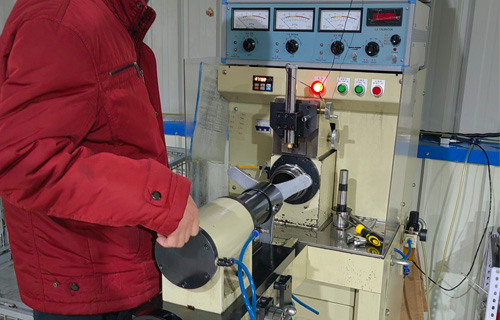
9 月 . 22, 2024 08:50 Back to list
spherical roller bearing vs ball bearing
Spherical Roller Bearings vs. Ball Bearings A Comprehensive Overview
Bearings play a crucial role in reducing friction and facilitating smooth motion between moving parts in machinery. Among the numerous types of bearings available, spherical roller bearings and ball bearings are two of the most commonly used. Each type brings its unique advantages and applications, making them suitable for specific scenarios.
Design and Structure
Spherical roller bearings feature barrel-shaped rollers that allow for a higher radial load capacity and the ability to accommodate misalignment. This characteristic makes them particularly effective in applications where the shafts may not be perfectly aligned due to manufacturing tolerances, thermal expansion, or operational wear.
On the other hand, ball bearings consist of a series of balls that are positioned between two concentric rings, known as races. This design allows for efficient load distribution, making ball bearings highly effective for applications with high-speed rotations. However, their load capacity is generally lower than that of spherical roller bearings, making them less suitable for heavy-duty applications.
Load Capacity
When comparing load capacities, spherical roller bearings have the upper hand. They can support both heavy radial and axial loads due to their larger surface area contact between the rollers and raceways. This feature makes them ideal for heavy machinery, such as conveyor systems, mining equipment, and wind turbines, where the load demands are significant.
In contrast, while ball bearings can handle significant loads, their design limits them in terms of both radial and axial load capacities when compared to spherical roller bearings. They are primarily used in applications where the loads are moderate, such as in electric motors, automotive applications, and household appliances.
spherical roller bearing vs ball bearing

Speed and Efficiency
Ball bearings excel in high-speed applications, making them a preferred choice in scenarios like electric motors and precision machinery. They experience less rolling resistance because of the smaller contact area between the balls and the races, contributing to their efficiency in high-speed operations.
Spherical roller bearings, due to their larger size and design, are not typically used in high-speed applications. The increased friction and heat generation can lead to wear and operational inefficiencies at high speeds. However, they are designed for endurance and can perform well in conditions where load changes occur frequently.
Maintenance and Lifespan
Both bearing types require proper lubrication and periodic maintenance to ensure optimal performance and longevity. Spherical roller bearings are generally more robust and can handle harsher environments and conditions, which can lead to a longer lifespan in demanding applications. Conversely, ball bearings may require more frequent maintenance in high-load scenarios due to wear caused by point contact.
Conclusion
In summary, the choice between spherical roller bearings and ball bearings ultimately depends on the specific requirements of the application at hand. Spherical roller bearings are ideal for heavy-duty applications that require high load capacities and the ability to accommodate misalignments. In contrast, ball bearings are suitable for high-speed operations where low friction and efficient performance are paramount. Understanding the strengths and limitations of each type is crucial for selecting the right bearing to enhance machine performance and longevity.
Latest news
-
Unlocking Efficiency with Spherical Roller Bearings
NewsOct.29,2024
-
The Ultimate Guide to Thrust Ball Bearings
NewsOct.29,2024
-
The Power of Thrust Roller Bearings: Engineered for Excellence
NewsOct.29,2024
-
The Power of Deep Groove Ball Bearings for Your Application Needs!
NewsOct.29,2024
-
The Power and Performance of Cylindrical Roller Bearings
NewsOct.29,2024
-
High-Quality Ball Bearing Manufacturing Machines
NewsOct.29,2024
